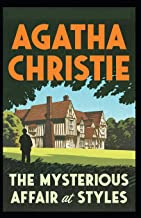Aristocrat also thought to have created the first female fictional detective
 |
| Baroness Orczy was from an aristocratic family in Hungary |
Emma Magdolina Rozalia Maria Jozefa Borbala Orczy de Orci was the daughter of aristocratic parents, but when she was just three years old the family had to leave their estate because of fears of a peasant revolt. They came to live in London when Emma was 14, where she later attended art school.
There she met Henry George Montagu MacLean Barstow, the son of an English clergyman, who was an illustrator. They were married in 1894 and to supplement her husband’s low earnings, Emma started working as a translator and illustrator. After their only son was born, she wrote her first novel, which was not a success. She then wrote a series of detective stories for the Royal Magazine under the name Baroness Orczy and acquired a small following.
In 1903, she and her husband wrote a play based on one of her short stories about an English aristocrat, Sir Percy Blakeney, who in his guise as the Scarlet Pimpernel, rescues French aristocrats from the guillotine during the French Revolution. The play was accepted for production in the West End and ran for four years. It was translated and staged in other countries, generating huge success for Baroness Orczy’s subsequent novel featuring the Scarlet Pimpernel.
Baroness Orczy wrote several other plays, collections of shorts stories, and about 50 novels. Eventually she became so financially successful she and her husband were able to buy a villa in Monte Carlo.
 |
| Elvi Hale as Lady Molly in The Woman in the Big Hat |
I was delighted to come across a Lady Molly story from the 1910 collection recently in The Giant Book of Great Detective Stories edited by Herbert Van Thal.
In The Woman in the Big Hat, Lady Molly and her assistant, Mary, are having tea together in Lyons, when they notice a crowd of people forming outside the café on the opposite side of the road. Lady Molly is quick to join them and succeeds in gaining entrance to the café to view the cause of the commotion, which is the dead body of a customer. This is fortuitous as she soon receives a message saying Scotland Yard will require her assistance. She is told that there is a woman suspect in the case and they will ‘rely on her a great deal’.
 |
| Lady Molly of Scotland Yard is available as a paperback |
She neatly traps the person responsible for administering the poison in the café, with the help of two of the culprit’s own servants. Her faithful assistant, Mary, observes: ‘…my dear lady had been right from beginning to end.’ Lady Molly explains to Mary how she arrived at the truth, saying: ’Our fellows did not think of that because they are men.’
Lady Molly was the first in a long line of women in fiction who have been able to beat the police at their own job because they have noticed something very simple the male officers did not pick up on.
The Woman in the Big Hat was adapted for the anthology TV series, The Rivals of Sherlock Holmes in 1971, with Elvi Hale starring as Lady Molly.
Lady Molly of Scotland Yard is now available from or



